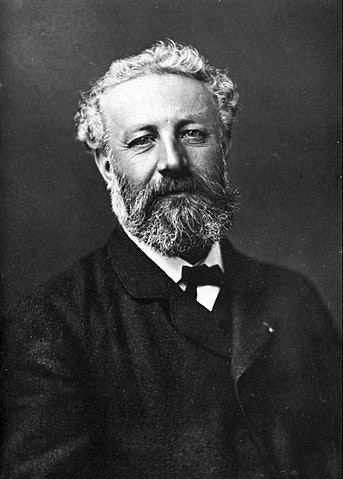
Last week I shared with you a historical paper by the English writer Clarke in which he described the GEO orbit. France has also experienced a similar prodigy. Like Clarke, his novels are always well documented, generally set in the not-so-far future, and imagine the technologies of the time. He is one of the most famous authors in history, and he is the second most translated author in a foreign language after Agatha Christie…You have probably found him, he is Jules Verne. Born in 1828 in Nantes and died in 1905 in Amiens, the French writer has nothing to envy his English collegue. In his novels, he predicted electric submarines and helicopters as well as holograms and the electric chair, not to mention solar sails and guided missiles.
The work that interests us here is his novel “From the Earth to the Moon” (1865). And it interests us for two reasons. The first is that some people see in it several similarities with the Apollo mission (almost a century later):
- The flight was made by the Americans.
- The real-life launch site was at Cape Canaveral, just a few hundred miles from book’s location.
- There were three astronauts aboard the rocket…
- Both journeys lasted just under a week.
- After making a loop around the moon, the two spacecrafts returned to the earth where they end up in the Pacific ocean.
The second reason that makes this book interesting is the fact that it is one of the books that inspired making the French film “A Trip to the Moon” (1901). A film that became a worldwide success as soon as it was released thanks to its captivating narrative format, and especially thanks to its special effects and explosions. Some analysts see even in this film the birth of the SciFi genre.
Without further ado, I let you enjoy the 14min film here, don’t forget the popcorn…
END OF TRANSMISSION.